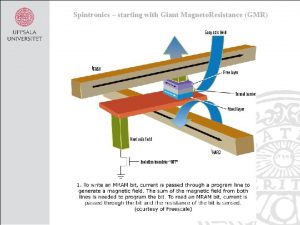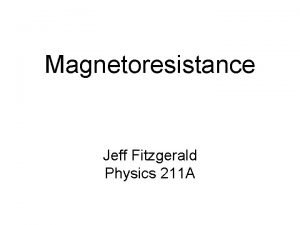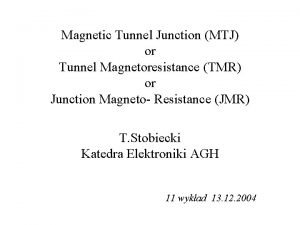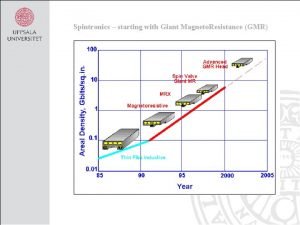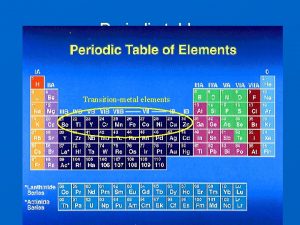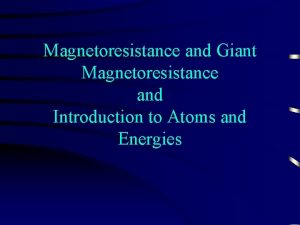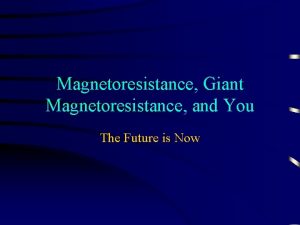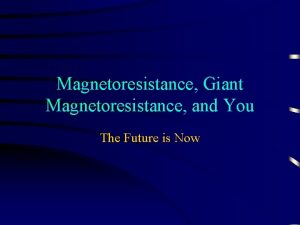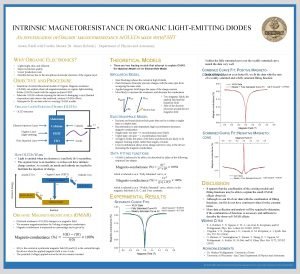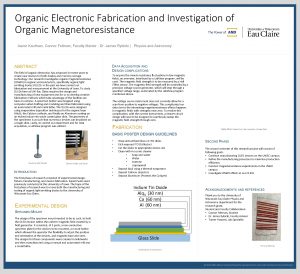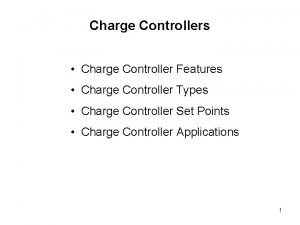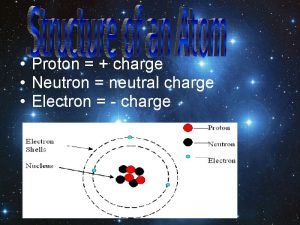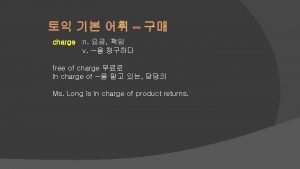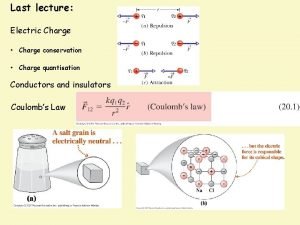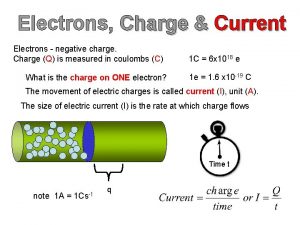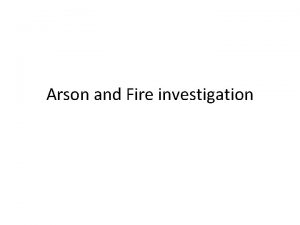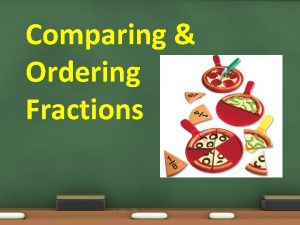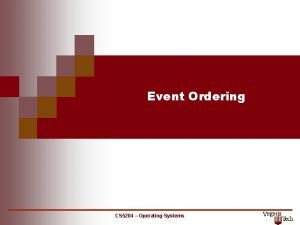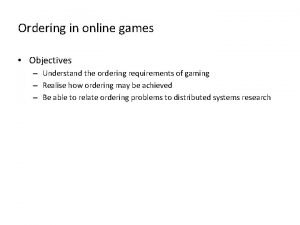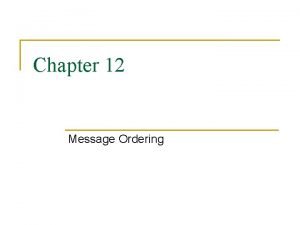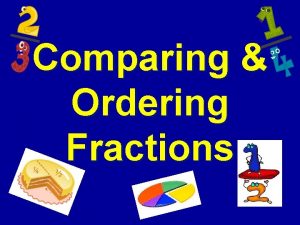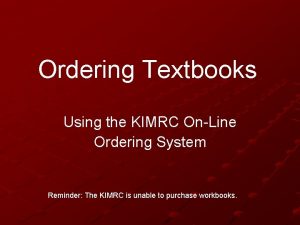The investigation of charge ordering in colossal magnetoresistance






























- Slides: 30

The investigation of charge ordering in colossal magnetoresistance Shih-Jye Sun Department of Applied Physics National University of Kaohsiung 2005/9/30 in NCKU 1

Colossal Magnetoresistance La 1 -x(Ca, Sr…)x. Mn. O 3 2

Phase diagram of CMR Urushibara et al (1995) Cheong and Hwang (1999) 3

Double exchange mechanism (A) Mn 3+ eg Mn 4+ O 2 - (1) 2 p (2) (3) eg t 2 g (B) Mn 3+ O 2 - eg (1) (3) 2 p eg (2) t 2 g (C) Mn 3+ Mn 4+ eg t 2 g O 22 p (1) (3) eg (2) t 2 g 4

John Teller distortion 5

The motivation La 1 -x. Cax. Mn. O 3 Temp PI para-insulator(PI) I TC TCO FI CO II TCO CO AFM x 0. 5<x<0. 85 x~0. 2 χ III TN TC(TCO or TN) Susceptibility instability From region I to II and II to III 6 TC T

Theoretical formulas derivation Hamiltonian: Itinerant spin Local spin (kinetic energy) (inter-Coulomb repulsion) (on-site Coulomb repulsion) 7

Hamiltonian in momentum representation 8

Greens function for susceptibilities Charge-charge susceptibility 9

Spin-spin susceptibility 10

Equation of motion method (1) (2) (3) (1) 11

(2) 12

Random Phase Approximation Wick’s theorem Fermi-Dirac distribution 13

14

15

16

Spin dependent in PI state 17

18

PI to CO transition Similarly, for spin-spin susceptibility 19

20

21

22

(spin dependent in PI) PI to AFM In CO state Mn+3 Mn+4 23

CO to AFM x 0. 55 0. 60 0. 65 0. 70 0. 75 0. 80 0. 85 TC 222 260 265 250 215 180 130 TN 156 143 Substituting to 130 125 113 106 Experimental data 102 Cheong and Hwang (1999) 24 To determine interaction relations

Results and discussion Reflection different transitions 25

Consistent with John Teller distortion More distortion non-symmetry 26

Charge gaps are depressed by U 27

Charge gap fluctuation The competition between HV and HU 28

Conclusions l Substituting experimental critical transition temperatures of TCOs and TNs to charge-charge and spin-spin susceptibility functions offer the determination of the inter-Coulomb repulsions and charge gaps for x > 0. 5, respectively. l These Inter-Coulomb repulsions increase with x increasing but not in linear. l In small on-site repulsion U the phase transitions only occur pare-insulator to charge-ordering transitions and in large U only occur para-insulator to antiferromagnetic transitions. The consequential phase transitions for parainsulator to charge-ordering following charge-ordering to antiferromagnetic transitions occur in a moderate U. In charge ordering states the charge gaps are opened and are depressed by U. l The scale of the charge gap increases linearly with x increasing excluding a small range of deviation. This deviation comes from the charge gap fluctuation according to the competition between inter-Coulomb and on-site Coulomb interactions. 29

Thanks for your attendance!! 30
 Giant magnetoresistance basics
Giant magnetoresistance basics Ordinary magnetoresistance
Ordinary magnetoresistance Exchange coupling
Exchange coupling Giant magnetoresistance basics
Giant magnetoresistance basics Difference between charge and electric charge
Difference between charge and electric charge Difference between static and current electricity
Difference between static and current electricity Hình ảnh bộ gõ cơ thể búng tay
Hình ảnh bộ gõ cơ thể búng tay Cái miệng xinh xinh thế chỉ nói điều hay thôi
Cái miệng xinh xinh thế chỉ nói điều hay thôi Mật thư anh em như thể tay chân
Mật thư anh em như thể tay chân Tư thế ngồi viết
Tư thế ngồi viết V cc
V cc Voi kéo gỗ như thế nào
Voi kéo gỗ như thế nào Thẻ vin
Thẻ vin Thơ thất ngôn tứ tuyệt đường luật
Thơ thất ngôn tứ tuyệt đường luật Các châu lục và đại dương trên thế giới
Các châu lục và đại dương trên thế giới Hổ đẻ mỗi lứa mấy con
Hổ đẻ mỗi lứa mấy con Từ ngữ thể hiện lòng nhân hậu
Từ ngữ thể hiện lòng nhân hậu Thế nào là hệ số cao nhất
Thế nào là hệ số cao nhất Diễn thế sinh thái là
Diễn thế sinh thái là Slidetodoc
Slidetodoc Vẽ hình chiếu vuông góc của vật thể sau
Vẽ hình chiếu vuông góc của vật thể sau 101012 bằng
101012 bằng Lời thề hippocrates
Lời thề hippocrates Glasgow thang điểm
Glasgow thang điểm đại từ thay thế
đại từ thay thế Quá trình desamine hóa có thể tạo ra
Quá trình desamine hóa có thể tạo ra Công thức tiính động năng
Công thức tiính động năng Khi nào hổ mẹ dạy hổ con săn mồi
Khi nào hổ mẹ dạy hổ con săn mồi Thế nào là mạng điện lắp đặt kiểu nổi
Thế nào là mạng điện lắp đặt kiểu nổi Dot
Dot Nguyên nhân của sự mỏi cơ sinh 8
Nguyên nhân của sự mỏi cơ sinh 8
